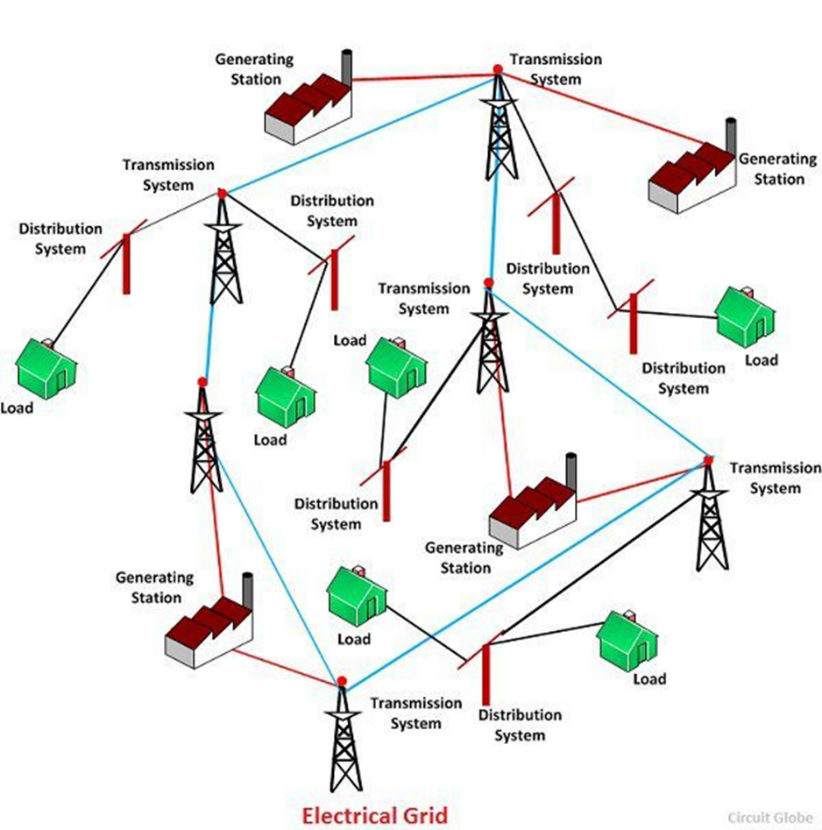can be defined as a network of transmission lines interconnected in a complex manner that convey electricity generated from a power plant station and transmits electricity along a distance to the distribution lines and the electricity is carried to the houses for the consumption.
Electricity is being consumed around the city by industries, hospitals and houses etc, in order to get electricity there must be three main parts of electrical grid that can help in the accurate transmission of electricity to the loads. And those three main parts are:
Generation of electricity but it can be categorized into two parts: centralized and decentralized generation of electricity. Centralized generation is a large-scale generation of electricity and is far from the consumption like, Hydro, Natural gas, Coal etc. While decentralised generation is not far from the consumption like rooftop solar.
Transmission and Distribution transmission includes transformers, substations and power lines that transport electricity from where it is generated to points of consumption. When electricity is at high voltages, transmission losses are minimized over long distances and resistive transmission lines. Therefore, at the point of generation, substations contain transformers that step-up the voltage of electricity so that it can be transmitted. Transmission is achieved via powerlines and can occur either overhead or underground. When it arrives at points of consumption, another substation is found to step-down the voltage for end-use consumption.

You might also want to read:


